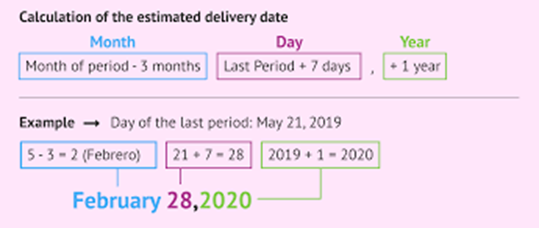A woman reports that her last normal menstrual period began on March 13, 2022.
What is this woman's expected delivery date using Nagele's rule?
Select one:
January 20, 2022
December 20, 2022
January 20, 2023
December 27, 2022
December 27, 2022
The Correct Answer is B
a. This does not follow the Nagele's rule.
b. Nagele's rule is a method to estimate the expected delivery date by adding 7 days and subtracting 3 months from the first day of the last normal menstrual period. In this case, adding 7 days to March 13 gives March 20, and subtracting 3 months gives December 20. Then, adding one year gives December 20, 2022.
c. This does not follow the Nagele's rule.
d. This does not follow the Nagele's rule.

Nursing Test Bank
Naxlex Comprehensive Predictor Exams
Related Questions
Correct Answer is C
Explanation
a. This is an incorrect interpretation of the assessment.
b. This is an incorrect interpretation of the assessment.
c. This is the correct interpretation of the assessment indicating that the labor is progressing well and the baby is descending into the pelvis.
d. This is an incorrect interpretation of the assessment.
Correct Answer is C
Explanation
a. Darkening of the areola and breast tenderness are common symptoms of early pregnancy but are not associated with Chadwick's sign.
b. Softening of the lower segment of the uterus is associated with Hegar's sign, not Chadwick's sign.
c. Chadwick's sign is the violet or purplish discoloration of the vulva, vagina, and cervix due to increased blood flow during pregnancy.
d. Presence of early fetal movements is not associated with Chadwick's sign.

Whether you are a student looking to ace your exams or a practicing nurse seeking to enhance your expertise , our nursing education contents will empower you with the confidence and competence to make a difference in the lives of patients and become a respected leader in the healthcare field.
Visit Naxlex, invest in your future and unlock endless possibilities with our unparalleled nursing education contents today
Report Wrong Answer on the Current Question
Do you disagree with the answer? If yes, what is your expected answer? Explain.
Kindly be descriptive with the issue you are facing.
